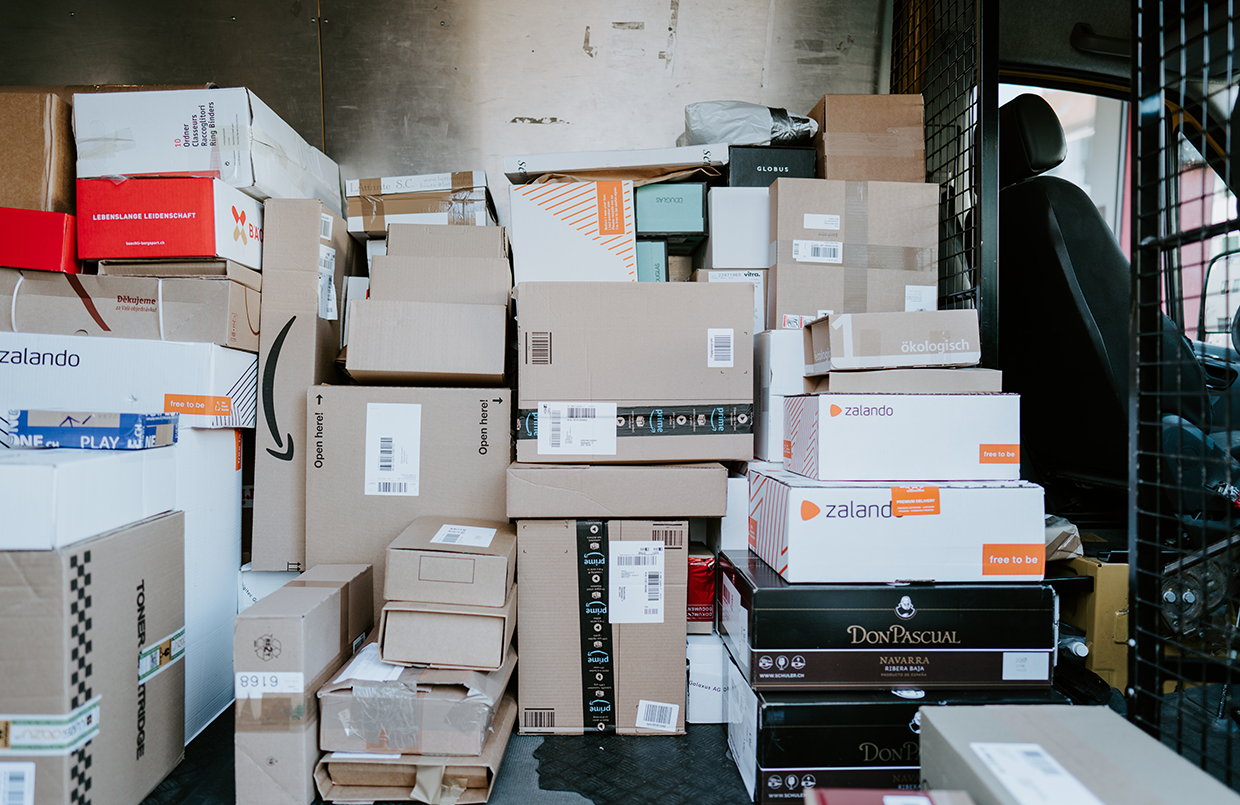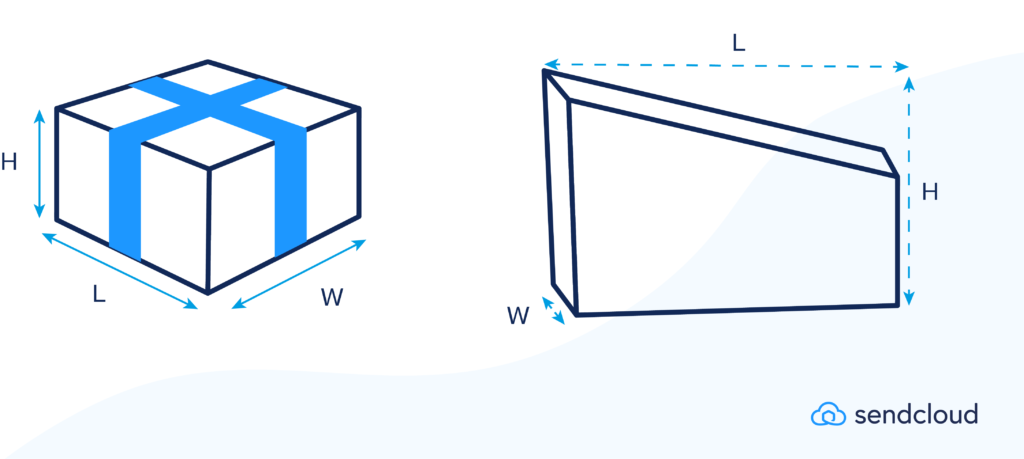Volumetric Weight – If you have an online store and manage your e-commerce logistics, you’ve probably noticed that when shipping companies talk about package dimensions, they refer to volumetric weight.
But do you really know what volumetric weight is? Did you realise that it’s not the same as weight in kilograms? Want to know why making this calculation is essential when you have an online store?
This article will reveal what volumetric weight is, how it is calculated, and the different criteria used by each delivery company. We’ve also included a calculator in this article to make it easier for you.
And we’ll even show you some hacks for correctly packing your goods and reducing their dimensions. That way, you can avoid paying the highest rate when shipping your products and reduce logistics costs for your e-commerce platform. In this article we’ll take a look at:
- What is volumetric weight?
- Examples of volumetric weight
- How to calculate volumetric weight?
- How to calculate volumetric weight
- Use our volumetric calculator
- Tips for reducing the volumetric weight
- Check the resistance of your package
What is volumetric weight?
Volumetric weight is the measurement used by shipping companies to work out the density of a package and the space it will take up. The result of this calculation is then compared to the package’s physical weight.
Do you need to calculate volumetric weight?
You may wonder why you need to calculate a package’s volumetric weight when you already know its physical weight.
Nevertheless, shipping a small but heavy package isn’t the same as for large and bulky ones.
In fact, the lorries that shipping companies use often fill up before reaching the maximum weight allowed.
This explains why these companies compare a package’s volumetric and physical weight before deciding which rate to charge; the highest rate applies.
So, in short, shipping companies must calculate volumetric weight so that they can:
- Ensure optimum use of space while shipping.
- Apply the appropriate rate.
- Guarantee they make a profit.
Likewise, it’s also vital that you’re aware of the volumetric weight of the goods you send from your online store. It means you’ll know how much you’ll have to pay in advance. And it’ll help you adjust your prices and avoid unexpected costs.
We take a closer look at the following examples:
What is volumetric weight? These examples should give you a better understanding:
Let’s imagine you have an online store selling household items.
One client buys a pair of large pillows, and another buys eight plates. You’ll need to use a larger box to send the pillows than for the plates. Therefore, the volumetric weight of the pillows will be greater than for the plates, even though they weigh less in physical terms.
The following image will give you a more visual idea of what we mean.
Let’s take another example.
This time, let’s say you sell hardware products.
Summer is not far away, and your client is getting ready for the warmer season. They decide to order an inflatable pool for the garden. Another client is planning some DIY projects for the summer and orders 1,000 nails and 1,000 screws.
This amount of nails and screws weighs more than the inflatable pool but will take up less space. So, its volumetric weight will be less than that of the pool.
In both of these examples, the delivery company will compare the physical and gross weight and use the greater of the two to calculate the shipping costs. As a result, it’ll be more expensive to ship a pair of large pillows and an inflatable pool than the plates and a box of nails and screws.
How to calculate volumetric weight?
If you’re wondering how to calculate volumetric weight, then you have two options:
- Manual calculation using a formula.
- Use our free volumetric calculator.
To calculate it manually, you can use this formula:
Length x height x width / conversion factor = volumetric weight
Remember that measurements for length, height and weight should be in centimetres. The conversion factor may vary from one shipping company to another, so you should always check this when choosing a provider. However, in the UK, most carriers use 5,000 as their standard conversion rate, although there are exceptions.
For example, the Post Office uses physical weight to calculate rates for parcels up to 20kg, in categories of small, medium and large dimensions. Anything above 20kg will be shipped using their Parcelforce international service, which uses a conversion rate of 5,000 to calculate the volumetric weight.
Likewise, you’ll also need to use a conversion rate of 5,000 to calculate it with FedEx.
We strongly recommend checking the volumetric weight of your package before dispatch, as the price may vary depending on where you are and the shipping company you use.
So, how do we calculate the volumetric rate with DHL, FedEx, Royal Mail and other shipping suppliers?
Let’s take a look at the calculations used by some of the most popular delivery companies, depending on the method you choose.
Volumetric weight with Royal Mail
Royal Mail has established different parcel size categories, and their charges vary. If your parcel is over their “medium” category (maximum dimensions 61cmX46cmX46cm or 20kg), then it will be delivered by their Parcelforce Worldwide service, and volumetric weight will come into play.
However, packages sent via Parcelforce are subject to a maximum of 30 kg and a maximum size of 2.5m and 5m girth combined.
How to calculate volumetric weight for Parcelforce Worldwide?
- Parcelforce make it easy for you and provide a volumetric weight calculator to save you the hassle.
- Nevertheless, it’s always good to double-check yourself, and you can do so by using the following formula:
Length x height x width / 5,000 = volumetric weight .
The final amount charged will be the higher value of the two: physical or volumetric weight.
How to calculate gross weight from dimensions with DPD
DPD’s regular parcel service is based on physical weight until the package exceeds 4.0 cubic metres per tonne. If your package is bigger than this, then the carrier will charge whichever is the greater: physical weight or volumetric weight. And for this regular parcel service, DPD uses a conversion rate of 5,000, as follows:
- Calculate volumetric weight with DPD parcel service: Length x height x width / 5,000 = volumetric weight
- If you’re after a quicker delivery, DPD has two options: DPD Air Classic and DPD Air Express.
If you opt for either of these air delivery services, then you’ll need to apply the conversion rate of 5,000 to calculate the dimensional weight of your package.
How do you calculate volumetric weight with UPS
All packages sent via UPS will be charged according to their billable weight. In other words, the carrier will compare its volumetric weight (or dimensional weight as the company also calls it) with its physical weight and use the highest figure.
UPS also uses a conversion factor of 5,000 (length x weight x height / 5,000).
The maximum dimensional weight for shipping with UPS is 70kg per package. And in terms of physical weight, their maximum is 30kg per package.
Calculate volumetric weight with DHL Express
- DHL offers two main delivery services – DHL Parcel and DHL Express – and both use a conversion factor of 5,000 (length x weight x height / 5,000).
- However, when using DHL’s Domestic Express Service, the volumetric weight will be calculated using a conversion factor of 5,000.
Should your package exceed their maximum weight limits of 70kg, either in physical or volumetric terms, then expect to pay a supplement.
Calculate dimensions with FedEx
When shipping with FedEx, volumetric weight is always calculated using the conversion factor of 5,000 (length x height x width / 5,000).
Use our volumetric calculator!
We’ve created this calculator to make your life a bit easier. Use it to calculate the dimensional (or volumetric) weight of your packages, according to the shipping company you want to use.
Tips for how to correctly pack and reduce the volume of your parcels
We’ve mentioned how to send packages cheaply before, but today we’re looking at how to reduce their volume and, therefore, your costs.
So get scribbling and take note of these six tips for correctly packing your parcels:
- Avoid unnecessary filling. Or rather, use the minimum possible packaging, even better if it’s sustainable.
- Make sure the packaging is appropriate for your products. By this, we mean the interior packaging. If you leave as little room as possible for the products to move around inside, there will be no need for extra filling.
- Use boxes lined with bubble wrap or some other material that will help hold the goods in place.
- Look for a packaging supplier that can adapt to your online business needs and buy different sized boxes, envelopes and tubes. Top tip: Suppliers usually provide the interior measurements of the boxes. Ask them for the exterior dimensions so that you can calculate the volumetric weight.
- Use biodegradable cable ties, especially if the products are small but heavy. By using this material, you can be sure your package will arrive in good condition, and you won’t be adding any extra weight.
- Select the best delivery method for each product type. For example, send heavier goods by sea and lighter goods by air.
Note: We recommend you take out shipping insurance for more valuable packages where long crossings are involved. That way, you won’t be out of pocket if the goods get damaged during transit. You can find our guide to shipping insurance here to help you choose a provider.
What’s more, check the resistance of your package (ECT and BCT rates)
If you aren’t familiar with these terms, you’re probably thinking there are more calculations ahead. But that’s not true.
Don’t be put off by these acronyms. We’re just talking about the strength of your packing boxes. Here’s a quick explanation of what they mean:
- BCT (Box Compression Test): how much weight can be placed on top of the box before it starts to buckle. The higher the BCT rate, the less likely your products are to suffer damage.
- ECT (Edge Compression Test): the probability of your box being perforated by an interior or external object.
But why is this important?
Remember that your boxes will be piled up inside a plane, boat, lorry or logistics centre. So, it’s important to choose a box that won’t bend, break or change shape during shipping.
If your products will be going on a long journey, we recommend you take the time to check their resistance and how much weight they can bear. Test them by putting heavy objects on top to see what happens.
Choose the shipping company that best suits your needs.
Sendcloud enables you to combine different companies so that you can offer the best shipping service according to the product you’re sending. And it’ll also save you administration time for your online store.
Request a free demo, and our experts will show you around the platform. You’ll be able to see first-hand what Sendcloud can do for your business.
If you’d like to explore for yourself, create an account and get a free 14-day trial – no strings attached. You’ll be amazed at what you can achieve (and save) by automating your logistics.

















